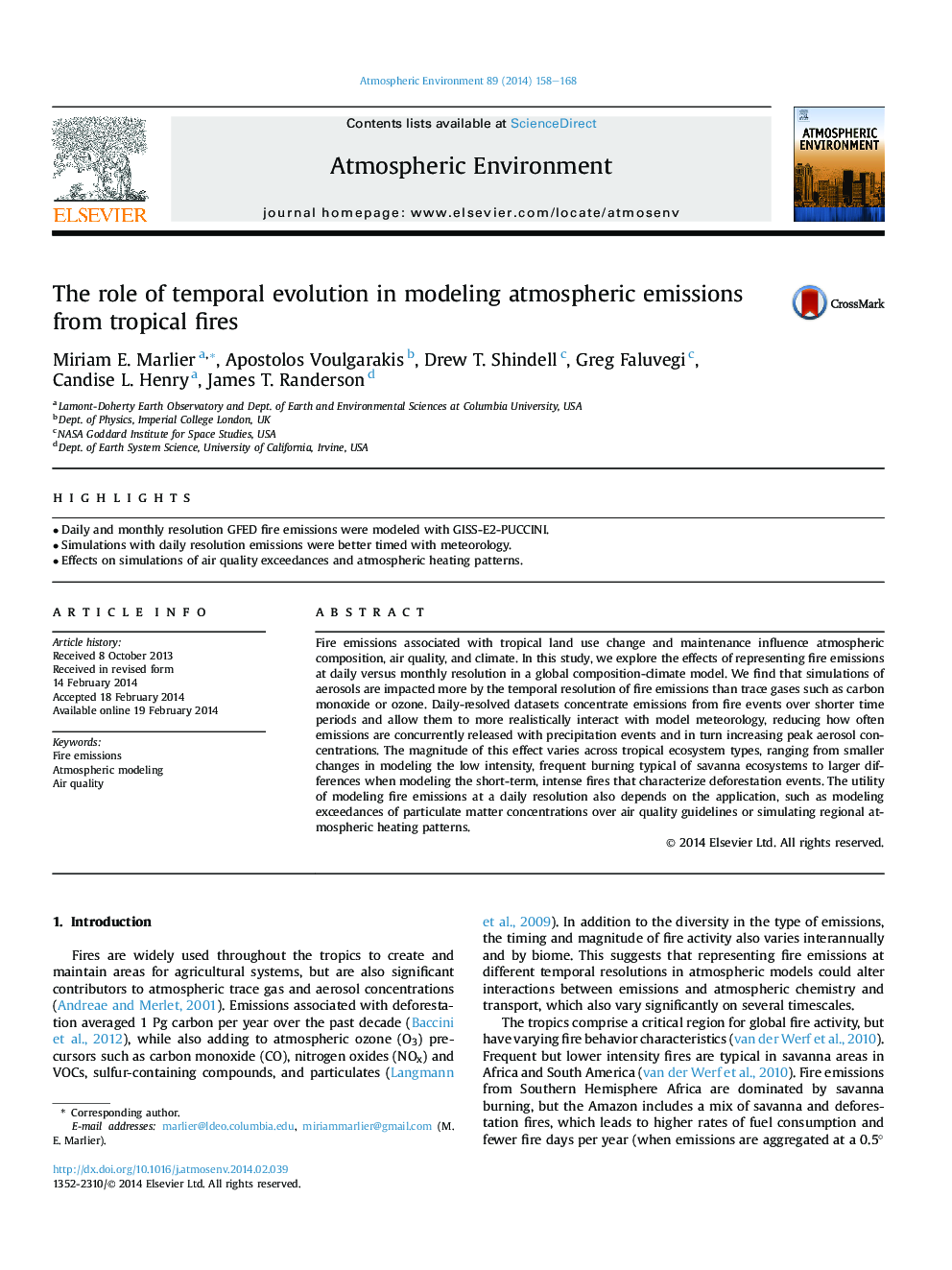| Article ID | Journal | Published Year | Pages | File Type |
|---|---|---|---|---|
| 6340155 | Atmospheric Environment | 2014 | 11 Pages |
â¢Daily and monthly resolution GFED fire emissions were modeled with GISS-E2-PUCCINI.â¢Simulations with daily resolution emissions were better timed with meteorology.â¢Effects on simulations of air quality exceedances and atmospheric heating patterns.
Fire emissions associated with tropical land use change and maintenance influence atmospheric composition, air quality, and climate. In this study, we explore the effects of representing fire emissions at daily versus monthly resolution in a global composition-climate model. We find that simulations of aerosols are impacted more by the temporal resolution of fire emissions than trace gases such as carbon monoxide or ozone. Daily-resolved datasets concentrate emissions from fire events over shorter time periods and allow them to more realistically interact with model meteorology, reducing how often emissions are concurrently released with precipitation events and in turn increasing peak aerosol concentrations. The magnitude of this effect varies across tropical ecosystem types, ranging from smaller changes in modeling the low intensity, frequent burning typical of savanna ecosystems to larger differences when modeling the short-term, intense fires that characterize deforestation events. The utility of modeling fire emissions at a daily resolution also depends on the application, such as modeling exceedances of particulate matter concentrations over air quality guidelines or simulating regional atmospheric heating patterns.
